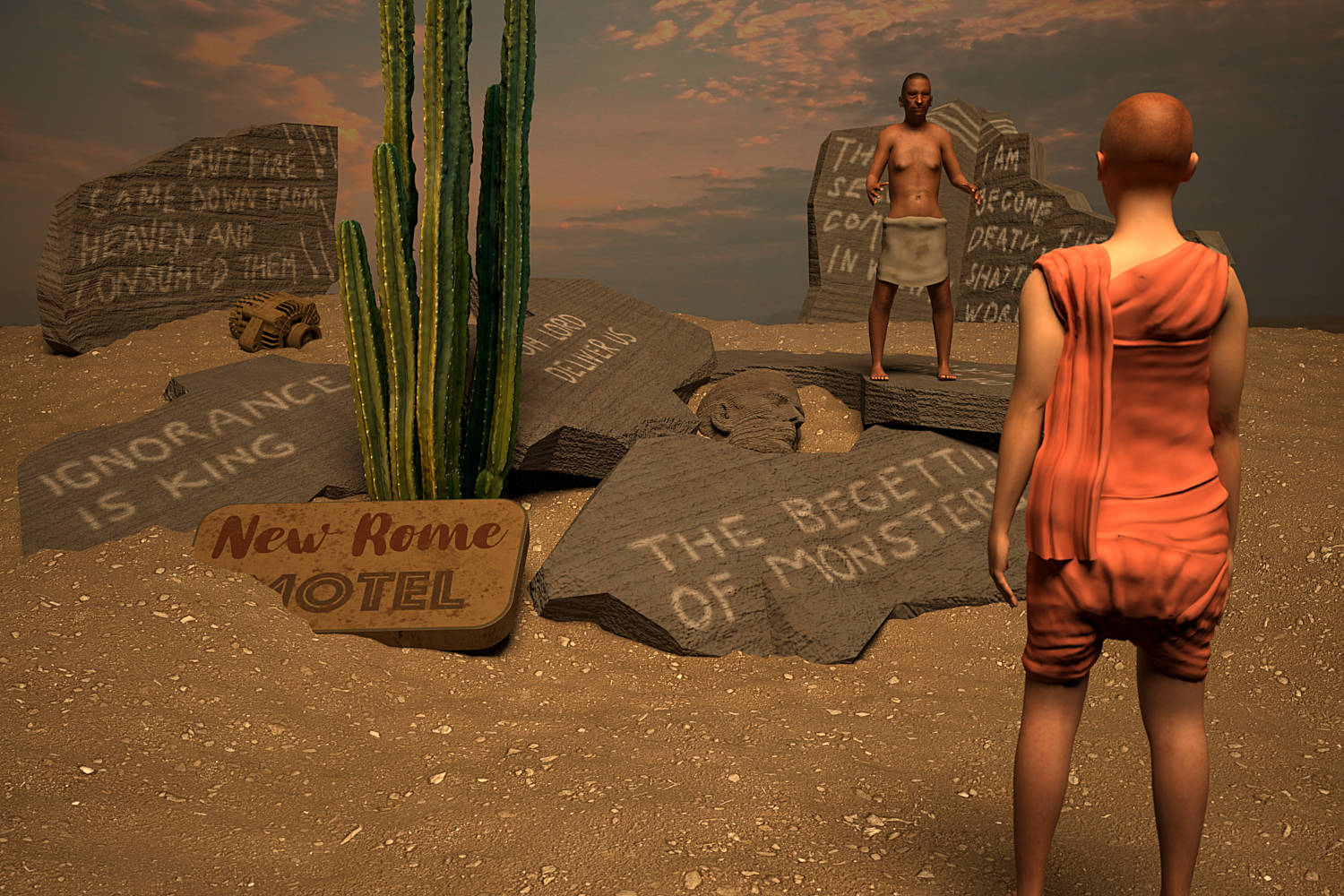
Canticle for Liebowitz
2018
Inkjet on watercolour paper
90 x 60 centimeters
The previous work in this series is based on the Russell Hoban novel Riddley Walker, it is a challenging read about a possible fate that could befall civilisation. An equally testing read informed this reimagining; Canticle for Liebowitz. It was written by Walter M. Miller and it is based on the existential horror the young American bomber crew member experienced during the World War Two bombing of the sixth century monastery at Monte Cassino and it inspired his strikingly original vision of a post-apocalypse future.
Canticle For Leibowitz is difficult to characterise; it’s profoundly thoughtful, frequently surreal, oddly comic and always thoroughly inventive. Slabs of latin exegesis punctuate memorable scenes such as breathless monks powering a hamster wheel to run a dynamo used to generate electricity for a single dim light globe. The monks labour for years on an illuminated manuscript copy of a holy relic, basically a blueprint of an electronic device discovered in some ruins and designed by an electrical engineer who is soon to be canonised as St. Liebowitz. it's a document whose original purpose is completely obscure to the reverent monks and we may assume it contributed to the nuclear disaster .
The setting centres on an isolated monastery in a post apocalypse desert in the US, and this together with the novel’s religiosity settled one decision — that the lighting has a pinkish tint bathing a landscape entirely devoid of greenery, much like the Hollywood bible movies of the 1950s. The chosen moment is the unexpected arrival of the peripatetic figure of the Wandering Jew, a wise but puckish presence who regularly reappears over the novel’s time span of millennia, and who frightens the novice monk sent into the desert by his abbot to prove his fitness.
The concrete debris scattered over the landscape carries ominously prophetic graffiti quoting texts such as the Bible, the Bhagavad Gita and the eminently quotable Winston Churchill. A half buried sign bears the name New Rome which has become the post-apocalypse seat of the Catholic church, the institution who historically became the guardian of knowledge after the fall of old Rome. The eroded head which has a likeness to Julius Ceaser, the hovering vulture and the dynamo are the type of talismanic and atavistic objects that populate Miller’s densely symbolic narrative.
A Science Fiction Classic Still Smolders : The New Yorker